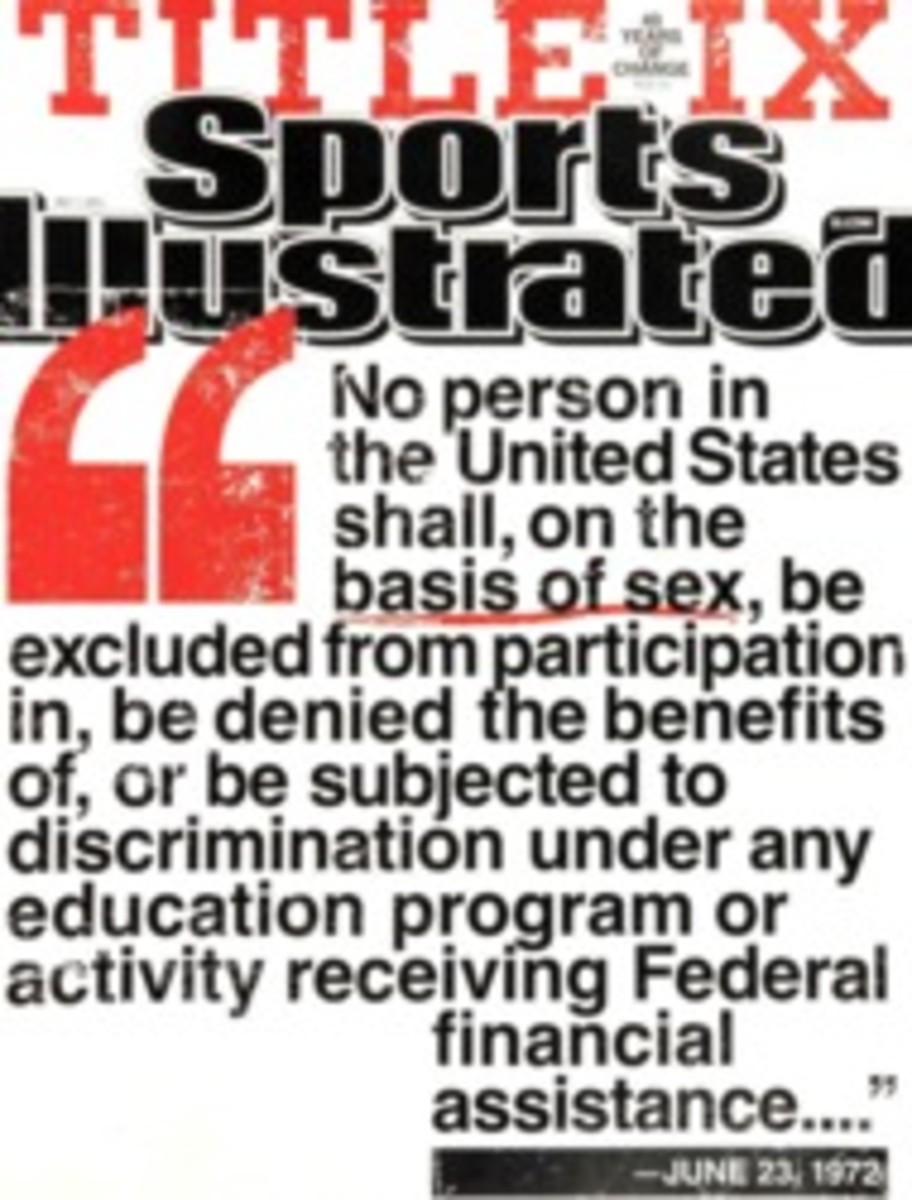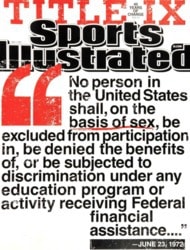
Chance to Be A Champion
The NCAA would prefer you forget this part of college sports history: that it actively fought the passage of Title IX and even filed a lawsuit in 1976 in an attempt to have the legislation overturned. Then led by executive director Walter Byers, the organization had no interest in sharing the money designated for men's sports. The NCAA thought of women's sports "as extracurricular activities, like taking a phys-ed class," says Donna Lopiano, who was the women's athletic director at Texas from 1975 to '92.
But plenty of girls wanted to keep playing after high school, and so in 1971 an alternative model to the NCAA, the Association for Intercollegiate Athletics for Women, was formed. Approximately 1,000 schools eventually joined the AIAW, which administered title games in 19 sports. "That first year, suddenly, everyone had a focused goal," says Cathy Rush, who won three AIAW titles and appeared in six straight final fours as basketball coach at Immaculata from '72 to '77. "It changed the perspective of the players and the coaches. You had a reason to have a good team, to have good players."
Basketball and softball were the headliners, but the AIAW threw equal energy into promoting other sports, such as badminton and fencing. And the organization showed that at least one women's sport could be successful. The 1973 basketball tournament cleared $4,500, and the first women's game at Madison Square Garden—between Queens and Immaculata in '75—drew nearly 12,000 fans. The sport's popularity allowed the AIAW to sign corporate sponsors and to broker modest broadcast deals with NBC and ESPN.
The AIAW also embraced many progressive policies. Athletes were free to transfer without having to sit out a year. Prospective student-athletes had to spend their own money for official visits, to help prevent schools with bigger budgets from having a recruiting advantage. There was a code of ethics that included guidelines for scheduling appropriate practice periods and providing safe transportation for athletes. When students, who made up part of the executive board, weighed in on issues such as rule changes, their votes counted as much as administrators'. At the AIAW's annual meeting, issues were settled with up or down votes, and amendments were made on the floor—nothing like the NCAA's current byzantine committee system.
"It was the way a democratic institution is supposed to work," says Lopiano.
By 1980 the NCAA realized that Title IX wasn't going away and voted to begin offering championships for women's sports. This created a competition for schools that the AIAW was destined to lose; men with allegiance to the NCAA controlled almost all of the nation's athletic departments. The defections came quickly, and the AIAW hosted its final title games in '82. A year later the organization dissolved.
Rush left coaching before the transition to the NCAA. "I will always remember that time, how positive it was for women's athletics," she says. "Like the game [at the Garden] and how it felt to go onto the court. The song they were playing was [Helen Reddy's] I Am Woman. Hear me roar—that's how we all felt."
"YOU HAD A REASON TO HAVE A GOOD TEAM, TO HAVE GOOD PLAYERS," SAYS RUSH OF THE TITLE GAMES CREATED BY THE AIAW.
PHOTO
IMMACULATA UNIVERSITY
MAC ATTACK Theresa Shank Grentz (12), a 5'11" guard, led Immaculata to three consecutive national championships, beginning in 1972. She went on to spend 33 years as a college head coach.

